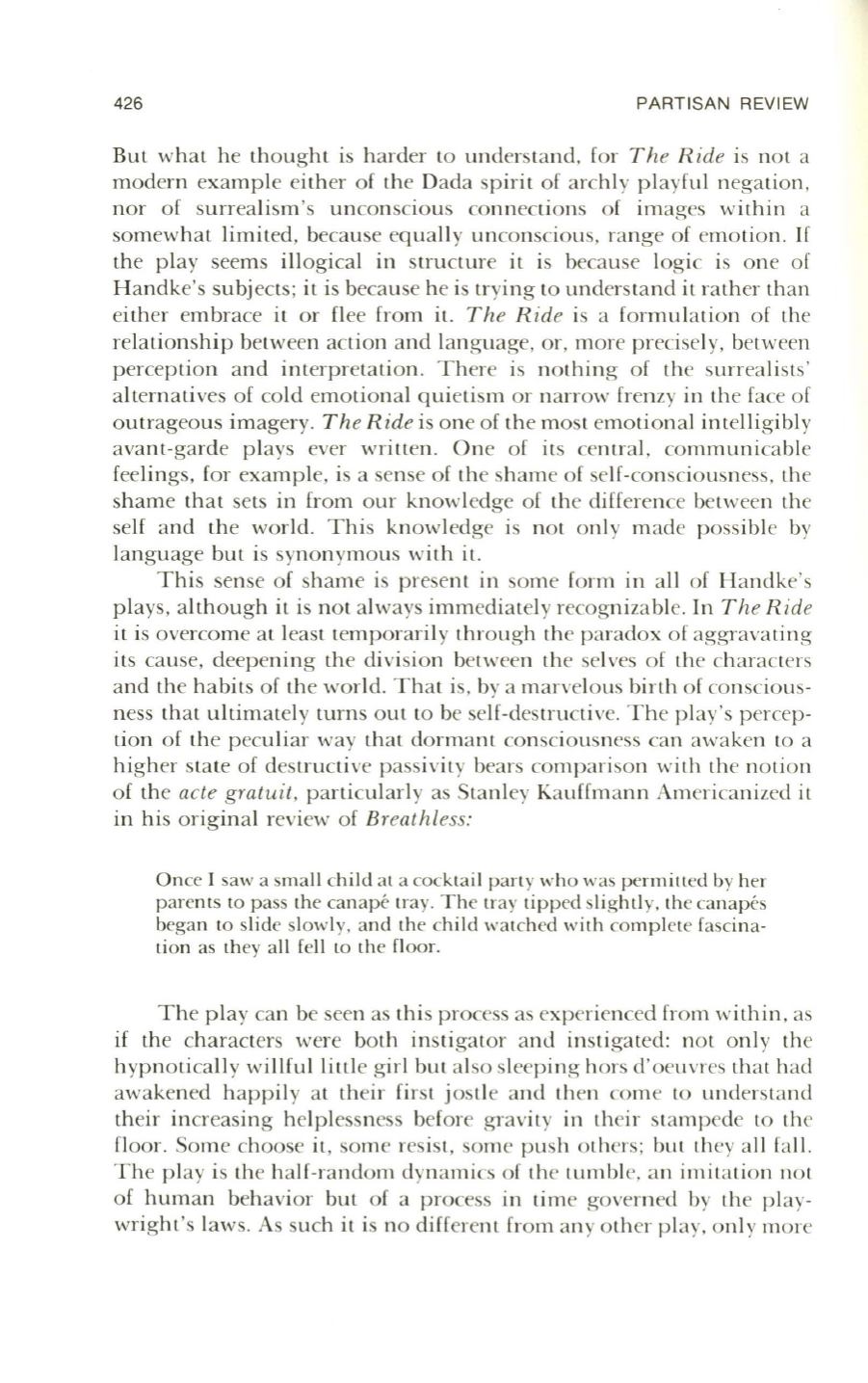
426
PARTISAN REVIEW
But what he thought is harder to understand, for
The Ride
is not a
modern exampl e either of the Dada sp irit of archly playful negation ,
nor of surrealism's unconscious connections of images within a
somewhat limited, because equally unconscious, range of emotion.
If
the play seems illogical in structure it is because logi c is one of
Handke's subjects; it is because he is trying to unders tand it rather than
either embrace it or flee from it.
The Ride
is a formul a tion of the
relationship between action and language, or, more precisely, between
perception and interpreta tion. There is nothing of the surrealists'
a ltern a tives of cold emotiona l qui etism or narrow frenzy in th e fa ce o f
outrageous imagery.
The Ride
is one of the most emotional intelligibly
avant-garde pl ays ever written. One of its central, communi cable
feelings , for example, is a sense of the shame of self-consciousness , th e
shame that sets in from our knowl edge of the difference between the
self and the world. This knowl edge is not on ly made possible by
language but is synonymous with it.
This sense of shame i present in some fo rm in all of Handke's
plays, although it is not a lways immediately recognizable. In
The Ride
it is overcome at leas t temporarily through the paradox of aggrava ting
its cause, deepening the division between the selves of the characters
and the habits of the world. That is , by a marvelo us birth o f consciou s–
ness that ultimately turns out to be self-destructive. The play 's percep–
tion of the peculiar way that dormant consciousness can awaken to a
higher state of des tructive passivity bea rs comparison with the notion
of the
acte gratuit,
particularly as Stan ley Kauffmann Americanized it
in his original rev iew of
Breat hless:
Once I saw a small chi ld at a cocktai l party who was permitted by her
parents
to
pass the canape tray. The tray tipped slightly, the canapes
bega n
to
slide slowly, and the child watched with complete fascina–
tion as they all fell
to
the floor.
The play can be seen as this process as experi enced from within, as
if the characters were both instigator and instigated: not only the
hypnotically willful little girl but a lso sleeping hors d' oeuvres that had
awakened happil y at their first jostl e and then come to understand
their increasing helplessness before gravity in their stampede to the
floor. Some choose it, some res ist, some push others; but th ey all fall.
The p lay is the ha lf-random dynamics of the tumbl e, a n imita tion not
of human behavior but of a process in time governed by the play–
wright's laws. As such it is no different from any other play, on ly more


